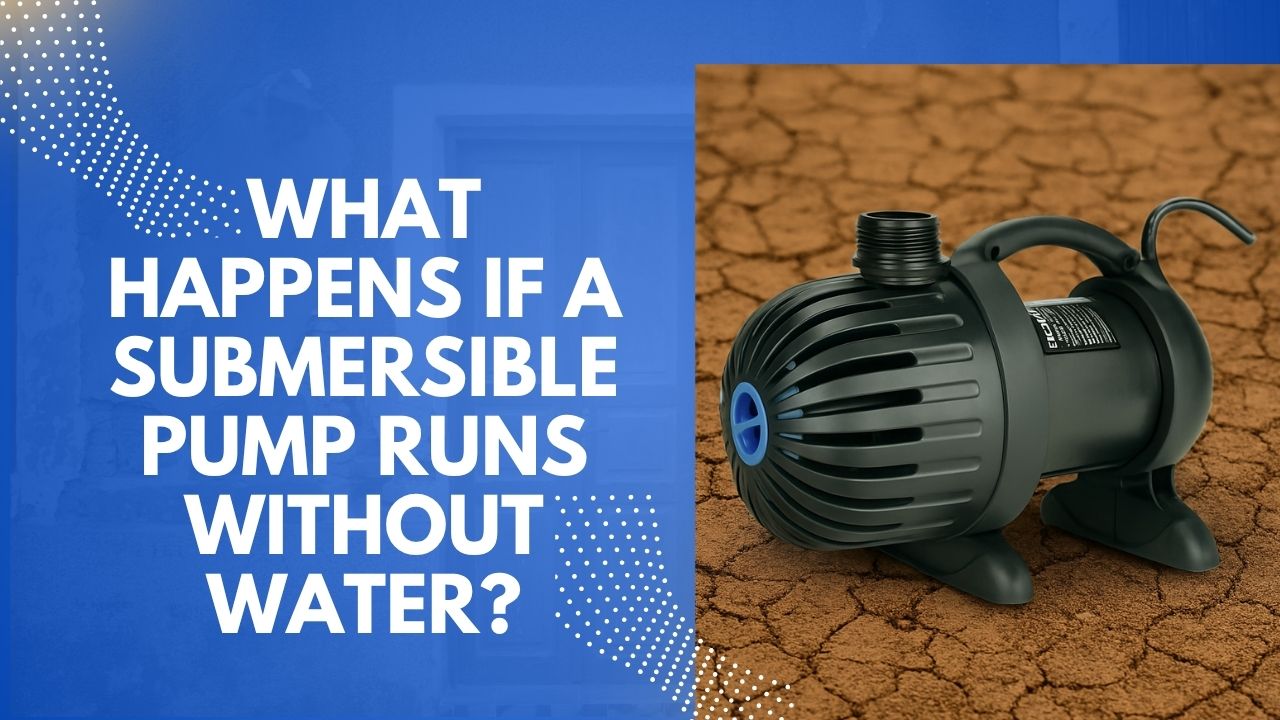
What Happens If a Submersible Pump Runs Without Water?
Why dry running is a disaster for your water feature (and how to stop it from happening)
Your water feature adds tranquillity and charm to your garden or patio. But behind the peaceful cascade of water is a submersible pump doing the heavy lifting. If that pump runs without water—even briefly—it could lead to costly damage or even total failure.
In this article, we break down what happens when a submersible pump runs dry, why it matters for your water feature, and how to prevent this common fountain issue.
Understanding Submersible Pumps
What Is a Submersible Pump?
A submersible pump is designed to operate completely submerged in water. It draws water from the basin of your water feature and recirculates it through the system, creating that soothing flow we all love.
Common Applications of Submersible Pumps
Submersible pumps are used in a wide range of applications, from fish ponds to indoor tabletop fountains. In garden water features, they're often hidden beneath rocks or inside reservoirs—out of sight but crucial to function.

Importance of Proper Operation
Role of Water in Cooling and Lubrication
Water isn't just there for show. It actively cools and lubricates the pump's motor and internal seals. Running a submersible pump without water strips away this protection, increasing the risk of overheating and mechanical damage.
Risks of Running a Water Feature Pump Without Water Overheating
Lack of Cooling Leading to Motor Damage
Submersible pumps rely on the surrounding water to dissipate heat. Without it, temperatures can spike in seconds, damaging internal components.
Potential for Motor Burnout
Dry running can quickly lead to motor burnout, requiring a full pump replacement—an expense no water feature owner wants.
Mechanical Damage
Seal Failure Due to Dry Running
The shaft seals inside a submersible pump are cooled and lubricated by water. Without it, these seals can warp, crack, or fail entirely, leading to leaks or internal corrosion.
Impeller and Shaft Wear
Dry operation can cause the impeller (which spins to move water) to grind against dry components, accelerating wear and potentially seizing the pump.
Formation of Air Bubbles and Resulting Damage
When a pump tries to move air instead of water, cavitation can occur. This causes mini air explosions inside the pump chamber, damaging impellers, creating noise, and reducing efficiency.
Causes of Dry Running in Water Feature: Low Water Levels
Seasonal Variations and Pump Placement
Summer heat = faster evaporation. If the water level in your water feature drops below the pump intake, you're risking a dry run every time the pump switches on.
Blocked or Clogged Intake: Debris and Sediment Obstructions
Leaves, algae, or pebbles can block the intake, cutting off the water flow. If water can't reach the pump, it's as bad as running with no water at all.
System Leaks: Loss of Prime and Air Ingress
Cracks in the basin or loose tubing can allow water to leak out—sometimes silently—leading to an underfilled system that starves your pump.
Warning Signs of a Dry-Running Pump: Audible Indicators
Unusual Noises from the Pump
A healthy submersible pump hums quietly. Clicking, grinding, or screeching sounds could mean it's running dry or is about to fail.
Visual Indicators: Fluctuating or Low Water Output
If the stream from your water feature becomes weak or erratic, dry running or a blocked intake could be the issue.
Physical Indicators: Overheating or Excessive Vibration
If the housing of your pump is unusually warm or vibrating excessively, shut it down immediately and inspect water levels.
Preventative Measures and Best Practices:
Regular Maintenance
Cleaning and Inspecting the Pump
Clean your submersible pump and filter every few weeks to remove debris, sediment, and algae that can block flow.
Monitoring Water Levels: Installing Float Switches and Sensors
Add a float switch or low water shutoff sensor to prevent the pump from running when the water level drops.
System Checks: Ensuring Proper Pump Placement and Function
Ensure your pump is properly submerged, correctly aligned, and not resting directly on sediment, which can clog intakes.
Consequences of Ignoring Dry Running: Reduced Lifespan
Accelerated Wear and Tear
Even one dry run can cut the life of your pump in half. Multiple incidents? You'll be shopping for a new one before the season ends.
Increased Repair Costs: Potential for Major Component Failures
A burned-out pump often means replacing more than just the motor; tubing, nozzles, and seals may also be affected.
Safety Hazards: Risk of Fire or Electrical Issues
Overheating pumps can pose serious risks, including electrical shorts or even small fires if left unchecked.
Conclusion
Importance of Awareness and Action
So, what happens if a submersible pump runs without water? In short, nothing good. From overheating to complete pump failure, dry running is a top cause of water feature breakdowns.
Final Recommendations
- Check water levels regularly
- Install a float switch or a shut-off
- Clean and maintain your pump monthly
Protect your water feature — and your wallet—by giving your pump the care it deserves.
Other contents you might like
Why Does My Water Feature Fountain Run Out of Water So Fast?
How Do Bacteria Grow on Water Feature Fountains?
Is it good to have a water feature inside the house?
Water Feature For Bedroom: Enhance Your Sleep and Relaxation
How Does a Water Feature Work? A Complete Guide for Beginners
What Plants Are Good Around Water Features?
Water Feature For Bedroom: Enhance Your Sleep and Relaxation
What Happens If a Submersible Pump Runs Without Water?

